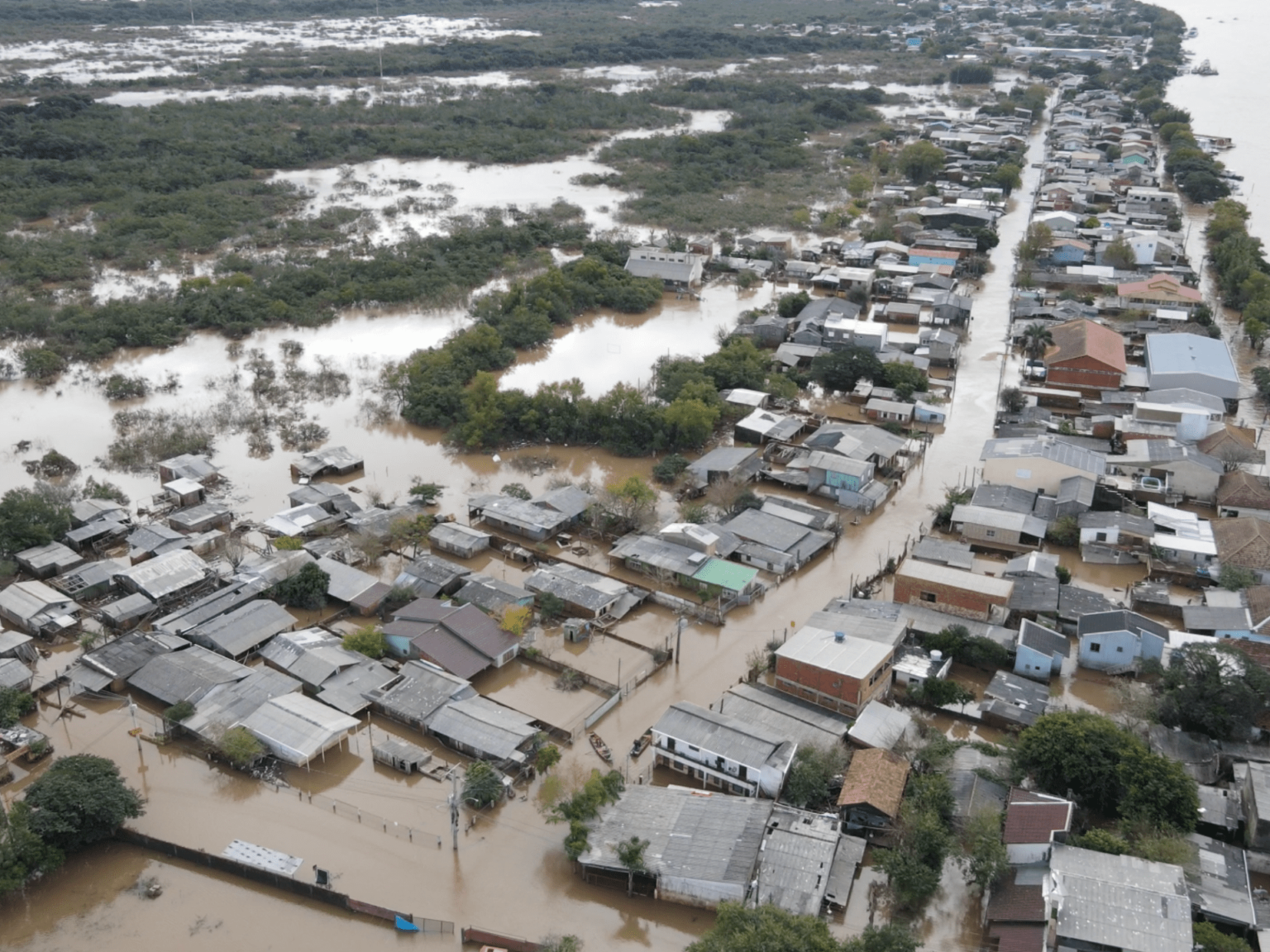Rambo’s store is one of approximately 45,000 businesses in the state capital that have been severely affected by the recent devastating floods. According to estimates from Porto Alegre’s Chamber of Store Managers, the total cost to commerce in the city during the period from April 29 to May 26 amounted to a staggering 487.7 million reals, equivalent to $91 million.
The floods, which commenced in late April following heavy rains that inundated the city and surrounding mountains, unleashed torrents of water that flowed through towns and converged into the Guaiba River, located alongside Porto Alegre. This resulted in the water rising to a height of 5.33 meters, a level never before witnessed in the region.
The previous record high water level of 4.75 meters above normal was established during the historic floods of May 1941, indicating the unprecedented scale of the recent calamity.
Business owners near the Porto Alegre waterfront recount watching in distress as the floodwaters steadily encroached upon their premises, eventually breaching their stores and restaurants.
“We were here almost a week without sleeping,” shared Eni Verdejo Monteiro, the proprietor of Lanches da Tia, a sandwich shop located near Rambo’s office supplies store.
As the floodwaters poured into Monteiro’s establishment and the electricity was cut off, she and her husband found themselves unable to secure the large metal gate in front of their restaurant. Fearing looters, they made the difficult decision to remain at the premises.
Their vigilance proved justified as numerous individuals were apprehended and imprisoned in the initial weeks of the flooding for attempting to burglarize and loot vulnerable homes and businesses. In the town of Eldorado do Sul alone, burglaries at 17 businesses resulted in the theft of equipment and products valued at $6 million.
Reflecting on their harrowing experience, Monteiro recalled, “Our son was worried. We didn’t have a cell phone, as it had run out of batteries. We had no contact with the outside world. No electricity. The only sounds that permeated the air were the helicopters and the cries for help. It is indescribable.”
Similar to Rambo and her spouse, Monteiro and her family now grapple with the arduous task of rebuilding their lives.
“We have to discuss matters extensively,” remarked Monteiro’s husband, Joao Batista Coelho. “The next two or three months will be challenging. We will incur losses. There will be no income. We lost our appliances, our kitchen equipment, our furnishings, our counters.”
Moreover, the couple is burdened with rent payments. Coelho grimly acknowledged, “The future appears bleak. However, surrender is not an option.”
State authorities have characterized the flooding catastrophe as the most severe climate-related disaster in the history of southern Brazil. Experts anticipate that reconstruction expenses in Rio Grande do Sul, the southernmost state in Brazil, could reach a staggering $4 billion. Over 90 percent of the municipalities across the state have been impacted, affecting 2.3 million residents.
The scale of the devastation is immense, with Rio Grande do Sul surpassing the size of the United Kingdom. Six hundred thousand individuals were displaced from their homes, with fifty thousand still residing in shelters. Debris litters the streets of towns across the state as residents discard their cherished possessions, awaiting collection by municipal clean-up crews.
Certain areas have suffered more severe damage than others, particularly sections of towns in the northern and western mountains of Porto Alegre that were ravaged by submerged rivers, obliterating residences, stores, and businesses.
Among the most devastated towns is Arroio do Meio, where President Luiz Inacio Lula da Silva recently visited and strolled with residents through streets that had been entirely wiped out by the floods.
In the state capital, the devastation presents a tale of two cities. Low-lying regions near the river, including City Hall and the historic city center, experienced unprecedented flooding. Meanwhile, neighborhoods situated on higher elevations appeared relatively unscathed, apart from interruptions to essential services like electricity and water due to the shutdown of pumps and the electrical grid.
Currently, the city is in the early stages of recovery, albeit progressing slowly. The Porto Alegre International Airport is anticipated to remain closed until the year’s end, while neighborhoods such as Humaita, Sarandi, and Ilhas are still submerged.
President Lula has pledged $10 billion towards the state’s rehabilitation efforts, with an additional $1 billion committed by the New Development Bank (formerly known as the BRICS Development Bank), led by former Brazilian President Dilma Rousseff. Nonetheless, the commencement of reconstruction is expected to be delayed due to inclement weather conditions, strong winds, and compromised infrastructure.
